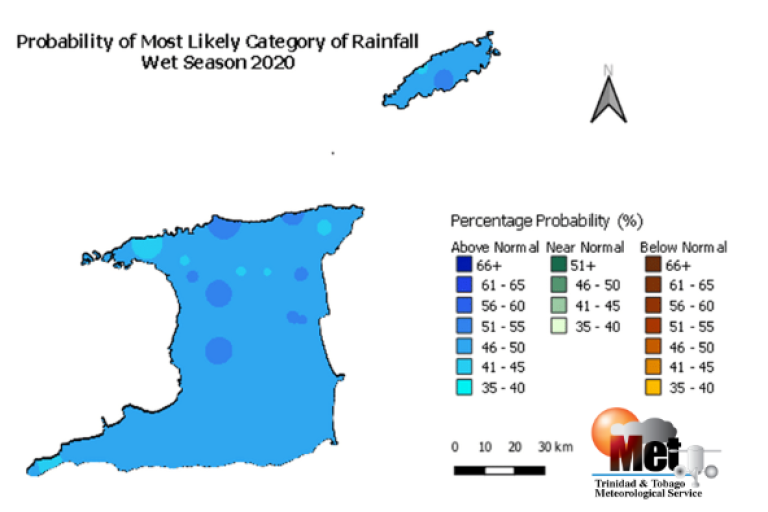Trinidad and Tobago Meteorological Service hosts virtual National Climate Outlook Forum ahead of 2020 Wet/Hurricane Season
As part of ongoing efforts to implement the Global Framework for Climate Services Programme at the national level, the Trinidad and Tobago Meteorological Service (TTMS) hosted its 2020 Wet Season-Tenth National Climate Outlook Forum (NCOF X) via video conferencing on May 12, 2020 due to the COVID-19 pandemic. With the 2020 Atlantic Hurricane Season set to officially begin on June 1, Acting Assistant Director of TTMS, Shakeer Baig emphasised the heightened importance of the early warning platforms to provide useful, actionable and easily understood national early warnings in the wake of the coronavirus pandemic. Senior meteorologist, Saide Shakeer elaborated on the TTMS’s risk-based early warning system, which complies with the World Meteorological Organization’s international standard for effective early warnings. She highlighted the features of the system, including the risk assessment matrix, which combines the probability of hazard occurring and the severity of impacts to determine the colour-coded risk level. She also explained what the colours mean, the likely impacts and how stakeholders should respond when public warnings messages are issued at each risk level.

As part of ongoing efforts to implement the Global Framework for Climate Services Programme at the national level, the Trinidad and Tobago Meteorological Service (TTMS) hosted its 2020 Wet Season-Tenth National Climate Outlook Forum (NCOF X) via video conferencing on May 12, 2020 due to the COVID-19 pandemic. With the 2020 Atlantic Hurricane Season set to officially begin on June 1, Acting Assistant Director of TTMS, Shakeer Baig emphasised the heightened importance of the early warning platforms to provide useful, actionable and easily understood national early warnings in the wake of the coronavirus pandemic. Senior meteorologist, Saide Shakeer elaborated on the TTMS’s risk-based early warning system, which complies with the World Meteorological Organization’s international standard for effective early warnings. She highlighted the features of the system, including the risk assessment matrix, which combines the probability of hazard occurring and the severity of impacts to determine the colour-coded risk level. She also explained what the colours mean, the likely impacts and how stakeholders should respond when public warnings messages are issued at each risk level.
- WMO Member:
- Trinidad and Tobago

